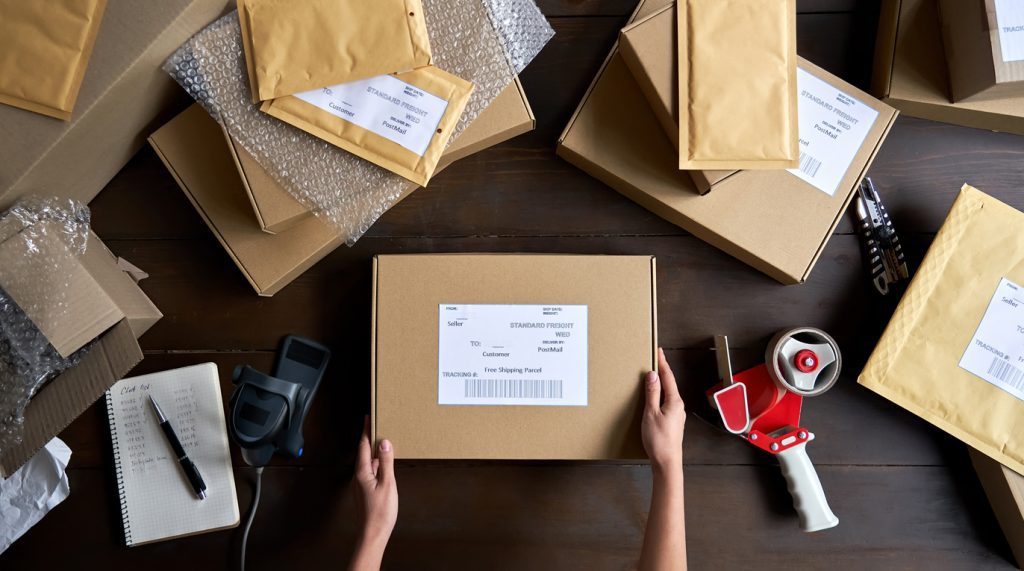


Packaging Regulations Are Changing Retail Margins

Retail businesses are feeling pressure from more than just consumer trends and rising labor costs. Shifting packaging regulations—both domestically and globally—are beginning to reshape how products are designed, shipped, and priced. For retailers, the growing complexity of these rules is not just a compliance issue. It is becoming a margin issue.
As governments tighten environmental standards and require higher levels of transparency and responsibility from producers, packaging has become a focal point of regulatory action. From extended producer responsibility laws to bans on specific materials, these changes have far-reaching implications for cost structures, supply chains, and brand positioning. While larger corporations may have the resources to absorb and adapt, small and mid-sized retailers are now facing the difficult challenge of staying competitive while staying compliant.
A Global Shift in Packaging Expectations
Much of the regulatory momentum has come from Europe, where countries are implementing laws that make producers accountable for the entire lifecycle of their packaging. The European Union’s proposed Packaging and Packaging Waste Regulation (PPWR) includes sweeping requirements around recyclability, reuse targets, and minimum recycled content.
But this is not just a European issue. In the U.S., several states have already passed their own versions of extended producer responsibility (EPR) laws. California, Oregon, Maine, and Colorado are among those leading the way, with additional states likely to follow. These laws typically require companies to pay into a fund based on the volume and type of packaging they produce. The funds are then used to support local recycling and waste management programs.
For retail brands, that means packaging choices now carry a direct financial implication. The heavier, less recyclable, or more complex the packaging, the more costly it becomes. What was once a marketing or logistics consideration is now tightly tied to regulatory exposure.
The Cost of Compliance
Every time new rules are introduced, they come with administrative and operational burdens. Businesses must track materials, label packaging with more accuracy, and sometimes redesign entire packaging systems to meet new thresholds. These adjustments cost money—not only in terms of raw materials, but also in labor, testing, documentation, and vendor coordination.
Take Unilever, for instance. As part of its response to shifting global regulations, it has invested significantly in redesigning its packaging portfolio to align with both sustainability targets and legal obligations. While these moves are seen as positive for long-term brand positioning, they also require upfront investment and shifts in procurement strategy.
Smaller retailers often face steeper hurdles. Without in-house legal or sustainability teams, they may rely on packaging suppliers to guide them through compliance. However, supplier limitations can create a bottleneck in adapting to regulation changes, which can delay product launches or add unexpected costs late in the production cycle.
Design Is No Longer Just About Shelf Appeal
Packaging design has historically been about attracting customers and protecting products in transit. Now, it also needs to comply with labeling mandates, material bans, and recyclability standards. This significantly narrows the design freedom brands once enjoyed.
California’s Truth in Labeling for Recyclable Materials law prohibits the use of the word “recyclable” on packaging unless the product meets strict criteria. That means even the appearance of being environmentally friendly can now result in legal risk. For businesses that built their identity on green marketing without backing it up operationally, these rules demand real change.
Seventh Generation, a cleaning products company, has redesigned its product packaging multiple times over the past decade to meet evolving standards. In doing so, they not only stayed compliant, but they used the opportunity to align the packaging with their sustainability messaging—strengthening their brand in the process.

E-Commerce Adds Another Layer of Complexity
With e-commerce continuing to grow as a dominant retail channel, packaging regulations intersect with delivery logistics in new ways. Packaging used for shipping must now account for both compliance and customer experience. Unboxing has become a brand moment, but one that can either delight or frustrate depending on how eco-friendly or excessive it feels.
New York-based company Package Free was built on the idea of eliminating unnecessary waste from e-commerce packaging. They’ve attracted a growing customer base of environmentally conscious shoppers, and their approach has pushed larger players to rethink what sustainable shipping can look like at scale.
Retailers using third-party logistics providers also need to align those relationships with packaging rules. If a fulfillment partner uses non-compliant materials or fails to meet labeling requirements, the liability may still fall on the brand selling the product. This makes packaging coordination a cross-functional responsibility between supply chain teams, legal departments, and marketing.
Innovation and Margin Recovery
To offset the margin pressure caused by new packaging requirements, companies are investing in innovation. From compostable films to molded fiber alternatives to plastic, new materials are being explored and tested in every major product category.
At the same time, data is playing a larger role. Smart packaging that incorporates QR codes, trackable chips, or recyclable indicators is helping companies meet transparency standards while offering new customer touchpoints. For instance, Lush has experimented with packaging-free products, like shampoo bars, that both cut costs and align with a zero-waste model.
The adoption of reusable packaging models is also on the rise. Companies like Loop are partnering with major retailers to introduce refillable containers for household goods. While this model presents challenges in logistics and consumer adoption, it is seen as a long-term path toward compliance without sacrificing product quality or brand value.
Private Labels and Retailer Mandates
Some retailers are going beyond regulatory requirements and implementing their own packaging mandates—especially for private label brands. This trend is growing among big-box stores, which are using packaging compliance as part of their ESG (Environmental, Social, and Governance) goals.
Target, for example, has updated its private label sustainability standards to require clearer labeling and more sustainable materials by 2025. These mandates apply not just to packaging design, but also to how vendors track and report the materials used.
For companies supplying to major retailers, aligning with these internal mandates becomes a precondition for shelf space. This reshapes the power dynamic between brands and retailers, with compliance now being part of product viability.
Global Brands, Local Rules
Another challenge businesses face is the fragmented nature of packaging regulation. A package that is legal in one state or country may not be in another. For multinational retailers or exporters, this can require maintaining multiple packaging SKUs or redesigning products for specific markets.
While some companies are working to standardize their packaging across regions to simplify operations, others are segmenting packaging by geography to avoid legal complications. Neither option is easy, and both add complexity that impacts margin, inventory management, and forecasting.
H&M has faced this issue as it moves toward more sustainable fashion packaging. With stores in dozens of countries, aligning packaging practices with both local expectations and international sustainability goals requires ongoing coordination across teams and jurisdictions.
Final Thoughts
The intersection of packaging regulations and retail margins is only becoming more important. As more governments prioritize environmental impact and waste reduction, retailers and manufacturers will need to stay nimble. What was once a low-priority line item on a product development checklist has become a strategic factor that can shape profitability and brand reputation.
For business owners, this shift presents both a challenge and an opportunity. Those who treat compliance as part of their product strategy—not just a box to check—will likely adapt more smoothly and possibly even strengthen their market position. Whether it is through material innovation, smarter logistics, or closer supplier relationships, the retail sector is finding that packaging is no longer an afterthought—it is a strategic frontier.





